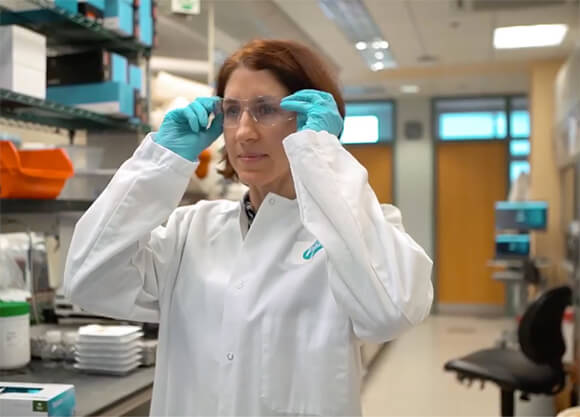
Research scientist worked on Pfizer’s COVID-19 vaccine
February 10, 2021

February 10, 2021

Her main focus is coordinating preclinical studies in the viral vaccines department.
What are some of the more significant scientific breakthroughs you’ve worked on?
Over the years, I’ve had the honor of contributing toward vaccines for the prevention of pneumococcal disease (Prevnar), Meningococcal Group B (TRUMENBA), RSV (currently in clinical trials) and most recently, SARS- CoV-2 (COVID-19).
How did you feel when Pfizer was first to announce a successful COVID-19 vaccine in November?
I was overwhelmed with a sense of pride, hope and gratitude. It still chokes me up when I take a step back to appreciate the enormous feat that our team has accomplished. I am grateful to have had the opportunity to contribute to this historic moment, and I am grateful to our amazing team, the trial participants and the members of the FDA. This is a giant puzzle, and all of the pieces are falling into place.
What motivates you to go to work every day?
The patients and their families. The thought that I had a small part in saving a patient or improving their quality of life makes it all worth it. The scientists that I have the privilege of working with inspire me as well. The dedication, passion and drive that we share keeps this an exciting place to work.
Describe what working conditions were like during the development of the COVID vaccine.
Scientists worked around the clock throughout the organization. The COVID-19 work has been prioritized so a continuous and focused effort could be put forth to meet our unprecedented timelines. It is not uncommon to work 16-20 hours a day. As the global death rate increased, we were aware of how critical this project is. The end goal of saving lives is a major motivator. The vaccine must be safe, efficacious and consistently producible in mass quantities.
Describe the safety protocols that go into developing a new vaccine.
The safety of our vaccine is always on the forefront and remains a priority. Even though timelines were truncated, the process has remained the same. First there is extensive preclinical testing. Next, the vaccine candidates entered a dose escalation Phase 1 clinical trial in healthy adults. After careful monitoring of the first recipients in the lowest dose groups, additional participants were vaccated. Any clinical symptoms and/or adverse events are reported and evaluated.
What are the later phases in human trials?
Once the dose level was determined to be well tolerated, recipients in a higher dose group were vaccinated and followed the same precautions. Participants are regularly monitored to test the quality and longevity of the immune response mounted against the vaccine. Based on the data, we selected the go-forward vaccine candidate and dose level. Following this decision, the number of study participants was greatly increased, and as more safety data was collected, the eligible age group expanded. Our Phase 3, double blind, placebo-controlled clinical trial included 44,000 healthy volunteers. The safety and efficacy will continue to be monitored in Phase 4 trials.
Do you work on other vaccines?
I prepare the actual vaccines that are administered in our preclinical animal studies, perform cage-side syringe filling and help to process the blood samples. From time to time, I help process tissues that are collected from our animal studies and help the team run them. I’m also in charge of safety for viral vaccines and overall lab management.
What precautions are taken to protect staff?
Our leadership team has done a stellar job implementing safety measures. High-contact areas are disinfected throughout the day; surgical masks are provided; and there are social distancing signs and markings on the floors. The number of staff members on campus has been reduced by encouraging remote working when possible. In addition, symptom checking and contact tracing are required when on site. These safety measures allow us to focus on the science.
What part of your Quinnipiac education helps you with your work?
The most important skill I learned at Quinnipiac was time management (and how to succeed with little sleep). Having a packed, science-heavy schedule complete with labs for each course was challenging. Juggling classes from morning to night forces you to be efficient and productive in the time you have before it all starts again the next day.
What is one essential thing you’d like to share with future scientists?
Throughout my career I’ve found flexibility to be key. You must be open to new opportunities and be ready for priorities to shift in an instant. The ability to change directions and focus on the next critical task will go a long way!
Read more articles in the Winter edition of Quinnipiac Magazine at QU.edu/magazine.
Quinnipiac Today is your source for what's happening throughout #BobcatNation. Sign up for our weekly email newsletter to be among the first to know about news, events and members of our Bobcat family who are making a positive difference in our world.
Sign Up Now